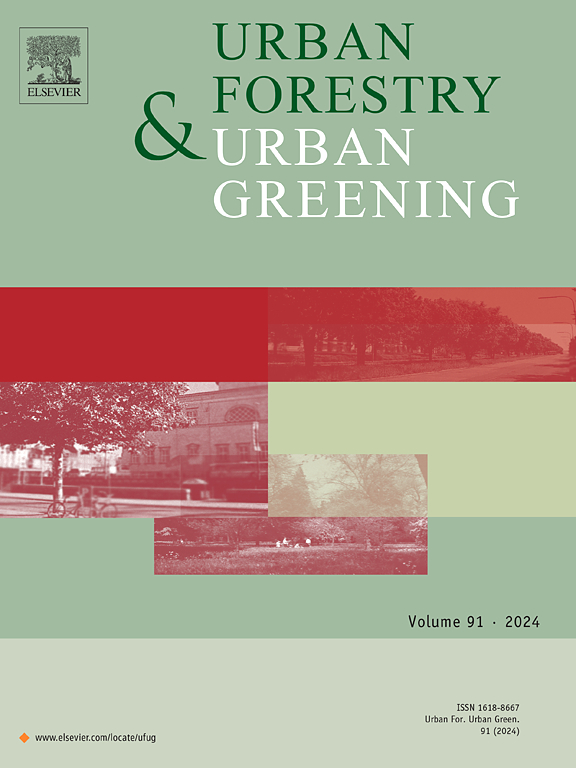Assessing tree canopy cooling efficiency in different local climate zones: A cost-benefit analysis
IF 6
2区 环境科学与生态学
Q1 ENVIRONMENTAL STUDIES
引用次数: 0
Abstract
Specific mechanisms by which tree canopy coverage (TCC) influences cooling and heat alleviation across different local climate zones (LCZs) are not yet fully understood, particularly in terms of nurturing costs and the threshold of TCC. This study, using six typical LCZs in Xi'an as a case study, employed a combination of field measurements and numerical simulations to establish the mathematical relationships between TCC, cooling intensity, and heat alleviation at the LCZ scale. A cooling benefit evaluation system, incorporating nurturing costs, was developed to precisely define the TCC threshold for each LCZ. The findings indicated that: 1) Tree cooling effects were influenced by wind direction and building shadow, with low-rise LCZs showing heightened sensitivity to TCC variations; 2) Low-rise LCZs had greater potential for thermal comfort improvement, with the most significant enhancements in the middle of streets in midrise and low-rise LCZs as greenery increased, and LCZ2 exhibiting optimal thermal comfort on the downwind side of streets; 3) A linear regression relationship existed between cooling intensity and TCC across six LCZs, while a logarithmic regression relationship was observed between heat alleviation and TCC in all LCZs except LCZ6; 4) TCC had a quadratic regression relationship with cooling efficiency, with high and compact LCZs reaching the TCC threshold sooner. The TCC thresholds for the LCZs were 24.08 % (LCZ1), 33.18 % (LCZ2), 45.35 % (LCZ3), 32.49 % (LCZ4), 44.89 % (LCZ5) and 47.12 % (LCZ6). Our research elucidated the cooling and heat alleviation effects of TCC at LCZ scales and offered a quantitative basis for optimizing tree planting management by balancing cooling benefits and nurturing costs.
求助全文
约1分钟内获得全文
求助全文
来源期刊

Urban Forestry & Urban Greening
FORESTRY-
CiteScore
11.70
自引率
12.50%
发文量
289
审稿时长
70 days
期刊介绍:
Urban Forestry and Urban Greening is a refereed, international journal aimed at presenting high-quality research with urban and peri-urban woody and non-woody vegetation and its use, planning, design, establishment and management as its main topics. Urban Forestry and Urban Greening concentrates on all tree-dominated (as joint together in the urban forest) as well as other green resources in and around urban areas, such as woodlands, public and private urban parks and gardens, urban nature areas, street tree and square plantations, botanical gardens and cemeteries.
The journal welcomes basic and applied research papers, as well as review papers and short communications. Contributions should focus on one or more of the following aspects:
-Form and functions of urban forests and other vegetation, including aspects of urban ecology.
-Policy-making, planning and design related to urban forests and other vegetation.
-Selection and establishment of tree resources and other vegetation for urban environments.
-Management of urban forests and other vegetation.
Original contributions of a high academic standard are invited from a wide range of disciplines and fields, including forestry, biology, horticulture, arboriculture, landscape ecology, pathology, soil science, hydrology, landscape architecture, landscape planning, urban planning and design, economics, sociology, environmental psychology, public health, and education.
 求助内容:
求助内容: 应助结果提醒方式:
应助结果提醒方式:


